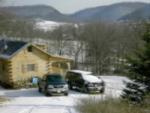I don't know if there are any Civil War buffs here, but I think that if there are, we could get some good discussions going, particularly in the bushcraft/survival department. Soldiers on both sides were able to survive with very little gear, compared to us, anyway, and discover quite a few tricks that may be useful in the field. What do you know about the Civil War? Particularly, field practices during the War?





 Reply With Quote
Reply With Quote



 Yankees, but just here me out) took very, very little with them. This allowed them to move quickly, an average of about 15 miles a day, by foot... From what I gather, a lot of their equipment would be considered "bushcrafty" by today's standards. Some only took a wool blanket, tin cup, knife, shelter half, and a few other personal items. While that may not be a fair comparison, given that most troops took more, but I think that it gives us a decent topic to discuss...
Yankees, but just here me out) took very, very little with them. This allowed them to move quickly, an average of about 15 miles a day, by foot... From what I gather, a lot of their equipment would be considered "bushcrafty" by today's standards. Some only took a wool blanket, tin cup, knife, shelter half, and a few other personal items. While that may not be a fair comparison, given that most troops took more, but I think that it gives us a decent topic to discuss...





Bookmarks